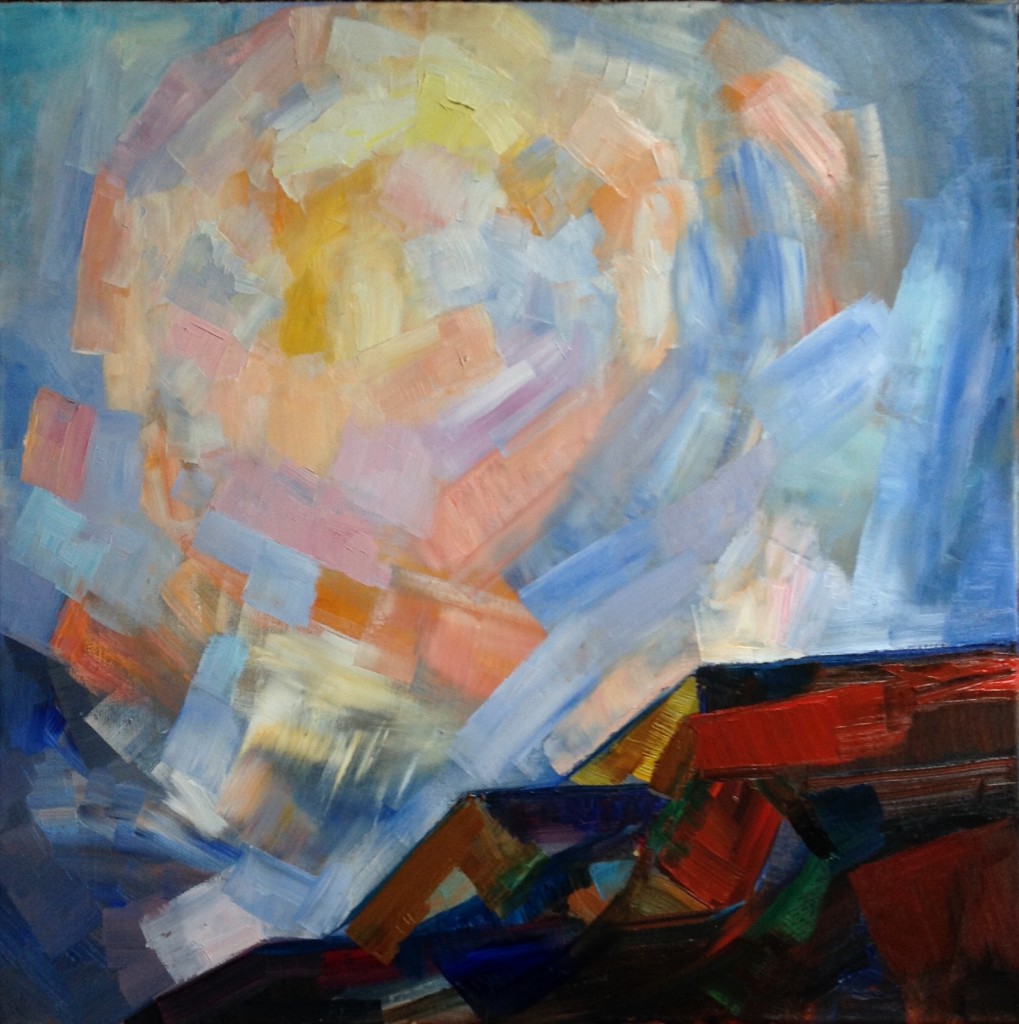This day’s painting session was shorter than I had hoped and expected — just two hours. Not even two full hours — rather two academic hours, with an interval in between; that’s how I generally structure my work time.
And yet, in spite of this brevity, it has noticeably moved the painting into the “right” direction; it is not complete, but it made sense to stop. Just because it may be the case that there is very little to be done at this point, and I don’t want to move forward without more clarity.
But that’s not the only thing that’s happened in this session. There was also an “aha-moment” of (what I hope is) a deeper understanding of the sonnet. Not “the” solution to the puzzle of this sonnet. I think this puzzle, like most of Shakespeare’s many puzzles is not there to be “solved”, but rather to puzzle the mind, to make it give up and let go. Just recently, discussing “Hamlet” with Eugene, I told him that all the puzzling contradictions are there intentionally — otherwise, there would be nothing to talk about and interpret, and the play wouldn’t have fascinated us for these four centuries. This (kind of) implied that this was Shakespeare’s way to gain popularity and even his path to immortality. But that’s not the case, I don’t really think so. What Shakespearean puzzles remind me of is this Buddhist “teaching” practice, which amounts to offering the mind something so absurdly paradoxical and incomprehensible that it gives up, and “goes away” for a moment at least, opening the gap into pure perception of reality.
So it’s not a “solution” — not even for myself, just a new way to think about the puzzle. The question that’s been bothering me all along is this: who is that “you” who can be immortalised in Shakespeare’s poetry while “I” remains completely, earthly mortal? So the “solution” would be the identity of “you” and “I”, which would fit the situation “perfectly”, which I might “argue for” in some sort of scholarly commentary.
I don’t have such a solution, but what I realised during the painting session (“remembered” would probably be a better word here) was that, in the act of creation, the usual sense of “I” is suspended. The “I” who is doing the creating is definitely not the everyday “I” navigating in the world. In poetry especially, by all accounts, the ancient mechanism of suspending the “left-brain consciousness” to let another voice speak audibly still works. That’s how great poetry is created — by listening to this inner voice, not by “talking” or “arguing”. So the tension between two “I”s, two “selves” is inherent in the process of writing poetry — and there is every reason to believe that that’s how Shakespeare composed his sonnets, too (at least, most of the time).
But it’s not as simple as just the relationship between a poet and his Muse. The “I” who is talking here is more complex, more ambiguous: on the one hand, it knows itself to be fully, completely, earthly, humanely mortal; on the other, it speaks of all breathers of this world with a mind-boggling detachment, as though it’s not one of them. There is a vacillation between mortality and immortality, between the speaker and the listener, between two “selves” — all throughout the poem, like the very rhythm of breathing in and out.
